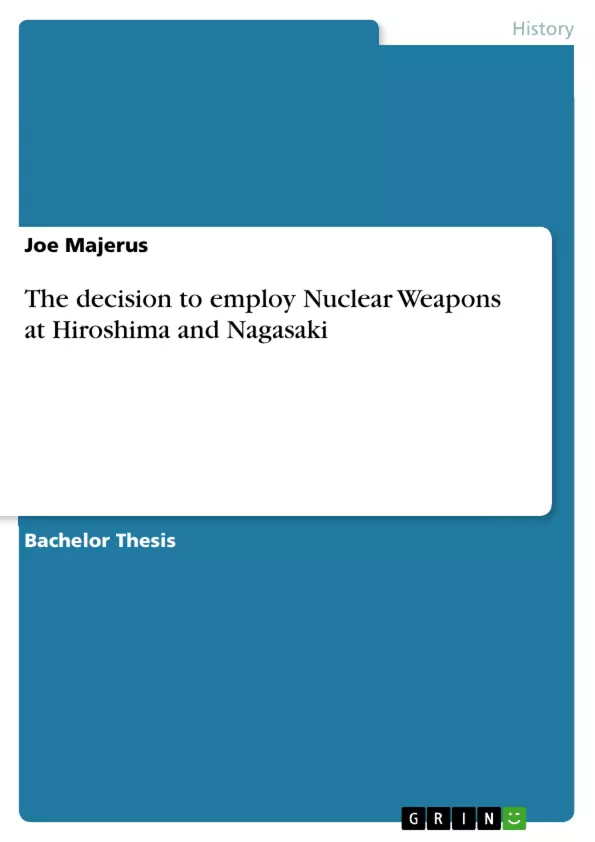A meticulous historical analysis of the primary reasons and motivations underlying the Truman administration's decision to drop atomic bombs over the Japanese cities on Hiroshima and Nagasaki in August 1945.
Inhaltsverzeichnis (Table of Contents)
- Introduction
- The War against Japan
- Imperial Resistance
- Tactics of Strategic Bombing
- Operation Downfall
- Alternatives for ending the War
- The impracticalities of a diplomatic solution
- Conventional Alternatives: Military and Economic
- Soviet Assistance
- Paths to Nuclear Destruction
- "Shock and Awe"
- The Potsdam Conference: Final Chance to avoid Nuclear Holocaust
- The Empire's Last Stand
- The Selection of Targets
- The Detonation of Atomic Bombs
- Reasons for Employing Nuclear Weapons
- Diplomatic Power Game
- Structural Imperatives
- Conclusion
Zielsetzung und Themenschwerpunkte (Objectives and Key Themes)
This paper aims to analyze the decision to drop atomic bombs on Hiroshima and Nagasaki, exploring the complex web of factors that influenced US decision-makers. It avoids attributing the decision to a single motive, instead focusing on the interplay of strategic, political, and social considerations.
- The historical context of the war against Japan and the US objective of unconditional surrender.
- The evaluation of alternative methods for ending the war and their perceived shortcomings.
- The role of strategic considerations, diplomatic power politics, and potential US casualties in the decision-making process.
- The impact of the atomic bomb's destructive potential and its implications for the post-war world.
- The complexities of analyzing historical events, acknowledging that actions are often influenced by a combination of factors rather than a single motive.
Zusammenfassung der Kapitel (Chapter Summaries)
- The introduction lays out the fundamental premise of the paper, emphasizing the importance of considering multiple factors in historical analysis, particularly when dealing with consequential decisions like the use of nuclear weapons.
- Chapter 2 provides an overview of the war against Japan, highlighting the Imperial resistance and the US strategy of strategic bombing.
- Chapter 3 examines alternative approaches to ending the war, exploring the limitations of diplomatic solutions, conventional military and economic strategies, and the potential for Soviet assistance.
- Chapter 4 delves into the path towards nuclear destruction, examining the concept of "shock and awe," the crucial Potsdam Conference, the last stand of the Japanese Empire, and the selection of target cities.
- Chapter 5 focuses on the actual detonation of the atomic bombs, providing a factual account of the events without delving into the broader implications or consequences.
- Chapter 6 explores the reasons behind the decision to employ nuclear weapons, touching upon the diplomatic power game and the structural imperatives that influenced US decision-makers.
Schlüsselwörter (Keywords)
This paper focuses on the historical context of the war against Japan, the decision-making processes behind the dropping of atomic bombs on Hiroshima and Nagasaki, and the strategic, political, and social factors influencing US decision-makers. Key terms include: atomic bomb, nuclear warfare, unconditional surrender, strategic bombing, diplomatic power politics, military expediency, Soviet Union, Potsdam Conference, and historical analysis.
- Arbeit zitieren
- Joe Majerus (Autor:in), 2012, The decision to employ Nuclear Weapons at Hiroshima and Nagasaki, München, GRIN Verlag, https://www.grin.com/document/201252



